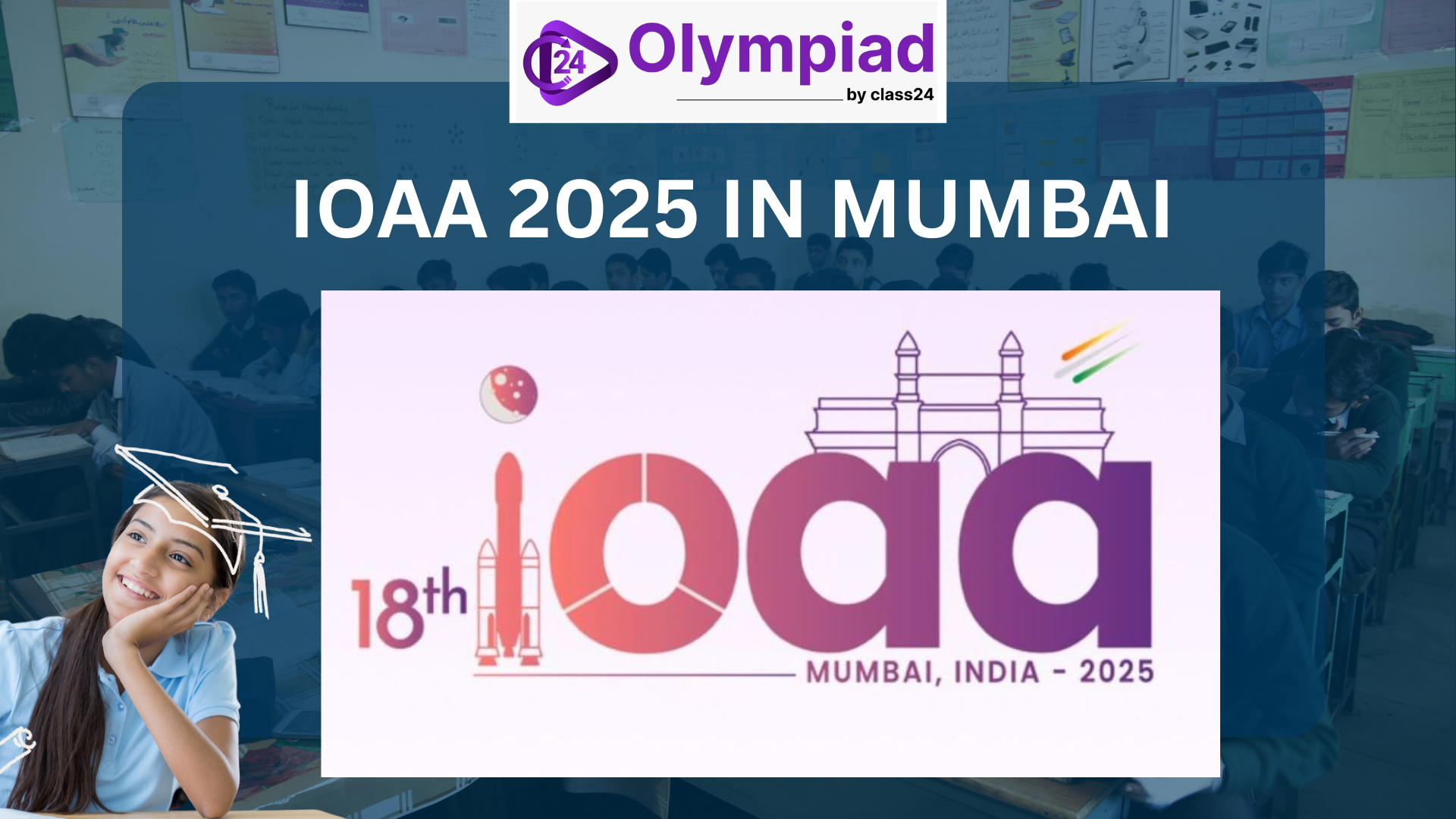
Mumbai is on its toes to meet the sharpest minds of the world as the city is set to host the IOAA 2025 (International Olympiad on Astronomy and Astrophysics). This is a prestigious event scheduled between August 11-21 and a significant event because it will be after more than ten years that India is hosting an international science Olympiad of this kind.
By uniting 300 students and 140 members of the delegation consisting of 64 countries, the IOAA 2025 is bound to become one of the largest and most competitive Astronomy Olympiad 2025 Olympiads in the world. This blog goes far into what is so special about this event, the importance of this event to India and why the junior version of the IOAA, IOAA Junior (IOAA-Jr) is so vital to raising young scientific talent.
The International Olympiad on Astronomy and Astrophysics (IOAA) is a world-wide Astronomy Olympiad 2025 and astrophysics contest which is held annually in order to discover, stimulate and challenge high school students who are fascinated by astronomy, astrophysics, and the space sciences. The IOAA 2025 is a contest organized only since 2007, but already gained an admired place among the most prestigious Olympiads in the scientific community.
| Feature | Details |
|---|---|
| Exam Name | International Olympiad on Astronomy and Astrophysics (IOAA) |
| Participants | High school students, ages approx. 16–19 |
| Countries Participating | Over 60 countries worldwide |
| Exam Duration | Typically 3 to 4 days of exams and activities |
| Exam Components | Theoretical exams, data analysis, observational rounds, team events |
| Purpose | To test knowledge and skills in astronomy, astrophysics, and space sciences |
| Organizers | Tata Institute of Fundamental Research (TIFR) & Homi Bhabha Centre for Science Education (HBCSE) |
| Selection Process | National level exams leading to international team selection |
| Skills Tested | Conceptual understanding, problem solving, data interpretation, and practical observation |
| Typical Activities | Written tests, night sky observations, scientific workshops, and field trips |
| Frequency | Annual international competition |
| Event | Date | Details |
|---|---|---|
| Arrival of Teams | August 10, 2025 | Participants and delegation members arrive in Mumbai |
| Opening Ceremony | August 11, 2025 | Official inauguration of IOAA 2025 |
| Theoretical Exam | August 12–13, 2025 | Written exam covering core astronomy topics |
| Data Analysis Round | August 14, 2025 | Interpretation and problem-solving based on data |
| Observational Round | August 15–16, 2025 | Night sky and telescope observation activities |
| Team Events & Workshops | August 17–19, 2025 | Collaborative challenges and theoretical sessions |
| Field Trips | August 18–20, 2025 | Visits to Nehru Science Centre, IIT Bombay, and GMRT Pune |
| Closing Ceremony | August 21, 2025 | Award distribution and closing remarks |
| Departure of Teams | August 22, 2025 | Teams depart Mumbai |
Not only is it the financial capital of India, but also IOAA Mumbai 2025 is the place where scientific education and research are rooted. Its rich academic environment, top quality of scientific organizations and cosmopolitan culture make it a natural place to have such global events like IOAA.
Organizers
The institutions have years of manifold experience in science learning and that guarantees IOAA 2025 to be a well-planned and motivating event.
1. Record-Breaking Participation
The records will be set as 64 counties will perform and 64 students will take part in this event. This does not only signify the increased global interest in Astronomy Olympiad 2025 but also demonstrates the increased role of India as the leader in science education.
2. Varied and High quality Actions
The Olympiad is not an exam alone. It consists of an acceptable combination of:
Data analysis, astrophysical concepts, and current issues in space research will be presented by notable scientists during workshops & lectures which have an interactive dimension.
3. Virtual Field trips
Students will get the practical experience that will be gained during the visits to one of the most renowned scientific facilities in India with IOAA Mumbai 2025:
| Exam | Age Group | Eligibility Criteria |
|---|---|---|
| IOAA (Senior) | 16 to 19 years | High school students enrolled in secondary education |
| IOAA-Jr | Under 16 years | Younger students with foundational knowledge in math, physics, and astronomy |
Exam Format
Selection Process
The International Olympiad on Astronomy and Astrophysics 2025 (IOAA) syllabus is very wide and is intended to challenge the students in terms of their knowledge and skills in astronomy, astrophysics, physics, and mathematics. It is centered on theoretical knowledge as well as practical methods of observation thus having a complete knowledge of the universe.
| Topic | Description |
|---|---|
| Basic Astronomy | Study of celestial objects, constellations, coordinate systems, phases of the Moon, eclipses, and seasons. |
| Celestial Mechanics | Motion of planets, satellites, Kepler’s laws, orbital elements, gravitation, and tidal effects. |
| Optics and Telescopes | Principles of optics, refraction, reflection, lens and mirror formulas, telescope types and usage. |
| Astrophysics | Stars and their properties, nuclear fusion, life cycle of stars, galaxies, and cosmology basics. |
| Data Analysis | Interpreting light curves, spectra, graphs, and simulated astronomical data. |
| Observational Techniques | Use of telescopes, celestial navigation, sky charts, and identifying celestial objects. |
| Mathematical Tools | Trigonometry, logarithms, coordinate transformations, and basic calculus concepts as applied to astronomy. |
| Aspect | IOAA (Senior) | IOAA-Jr (Junior) |
|---|---|---|
| Target Age Group | Approx. 16 to 19 years (high school students) | Under 16 years |
| Purpose | Advanced competition in astronomy and astrophysics | Introduction to astronomy and astrophysics for younger students |
| Exam Components | Theoretical exams, data analysis, observational rounds, team events | Theoretical tests, practical activities, sky observations |
| Duration | 3 to 4 days of exams and activities | Typically 5 days, includes written, hands-on, and observational rounds |
| Level of Difficulty | Higher, focused on deeper concepts and advanced problems | Moderate, focusing on fundamental concepts and skills |
| Organizers | Tata Institute of Fundamental Research (TIFR), HBCSE | Ministry of Education and Research, Romania; local organizers |
| Selection Process | National Olympiads followed by international selection | National exams and orientation camps leading to international participation |
| Focus Areas | Astronomy, astrophysics, physics, math | Basic astronomy, physics, math, practical observation |
| Location of 2025 Event | Mumbai, India | Piatra Neamț, Romania |
| Participation | Over 60 countries, 300+ students | Smaller scale, younger participants from multiple countries |
1. Familiarise with the Syllabus
Emphasize on astronomy fundamentals, planetary mechanics, physics and applied mathematics. Read textbook and web-based courses as well as sample assignments.
2. Practice-Observation Skills
Find sky simulators, such as Stellarium, or join Astronomy Olympiad 2025 clubs nearby to get some practical training in naming the stars, planets and constellations.
3. Training Camps Join
Attend a national level orientation and selection camps by such bodies as HBCSE, where guidance and mentorship in addition to mock tests are provided.
4. Previous Year Papers
Take a look at previous exam questions of the IOAA 2025 and IOAA-Jr to get more accustomed to the structure and the level.
5. Learn and Work
Collaborate with classmates to find solutions to problems and discuss it in the group to strengthen your knowledge.
The 18th IOAA 2025 International Olympiad on Astronomy and Astrophysics in Mumbai is a historic occasion not just because it will highlight the senior students at the high level but also hail the junior Olympiad participants as the future of Astronomy Olympiad India 2025. Being a host of IOAA 2025 2025 demonstrates the emerging leadership of India in science education and collaboration with the rest of the world.
To young Indian students, IOAA and IOAA-Jr present greater opportunities than ever to study the Universe, learn the art of science and become a member of an international society of enthusiastic young astronomers.
We will have more to announce and other tips on how to prepare so stay tuned!
The content is spot on! It breaks down complex topics into simple, digestible parts. Really helped me understand Rajasthan’s polity and history better. Highly recommended for serious aspirants!
What sets this platform apart is the clarity of explanations and structured study plans. It kept me motivated and on track throughout my prep journey.
Loving the regular updates and current affairs section. Makes revision so easy. The mock tests gave me a real feel of the actual exam!




Leave a Comment